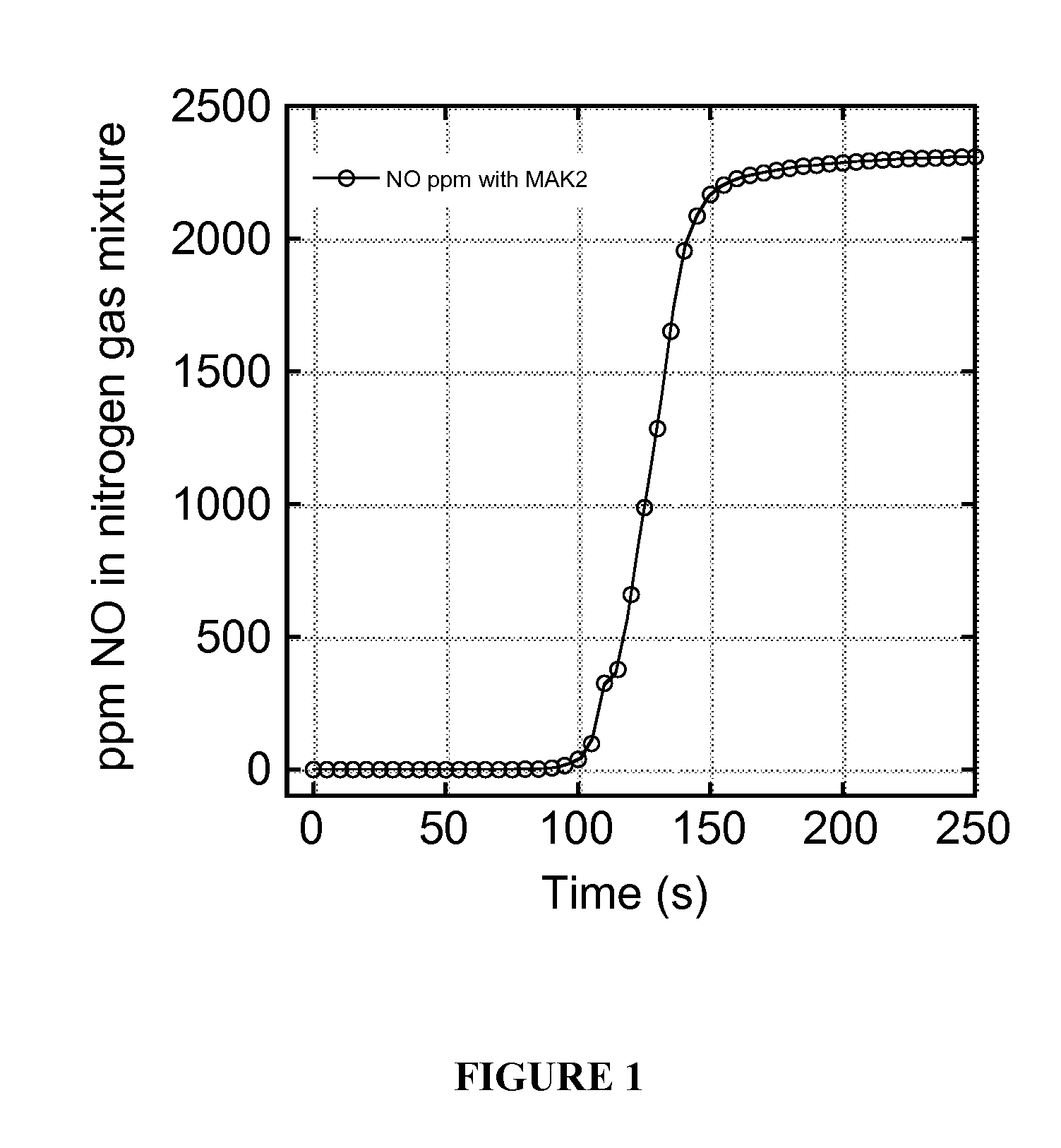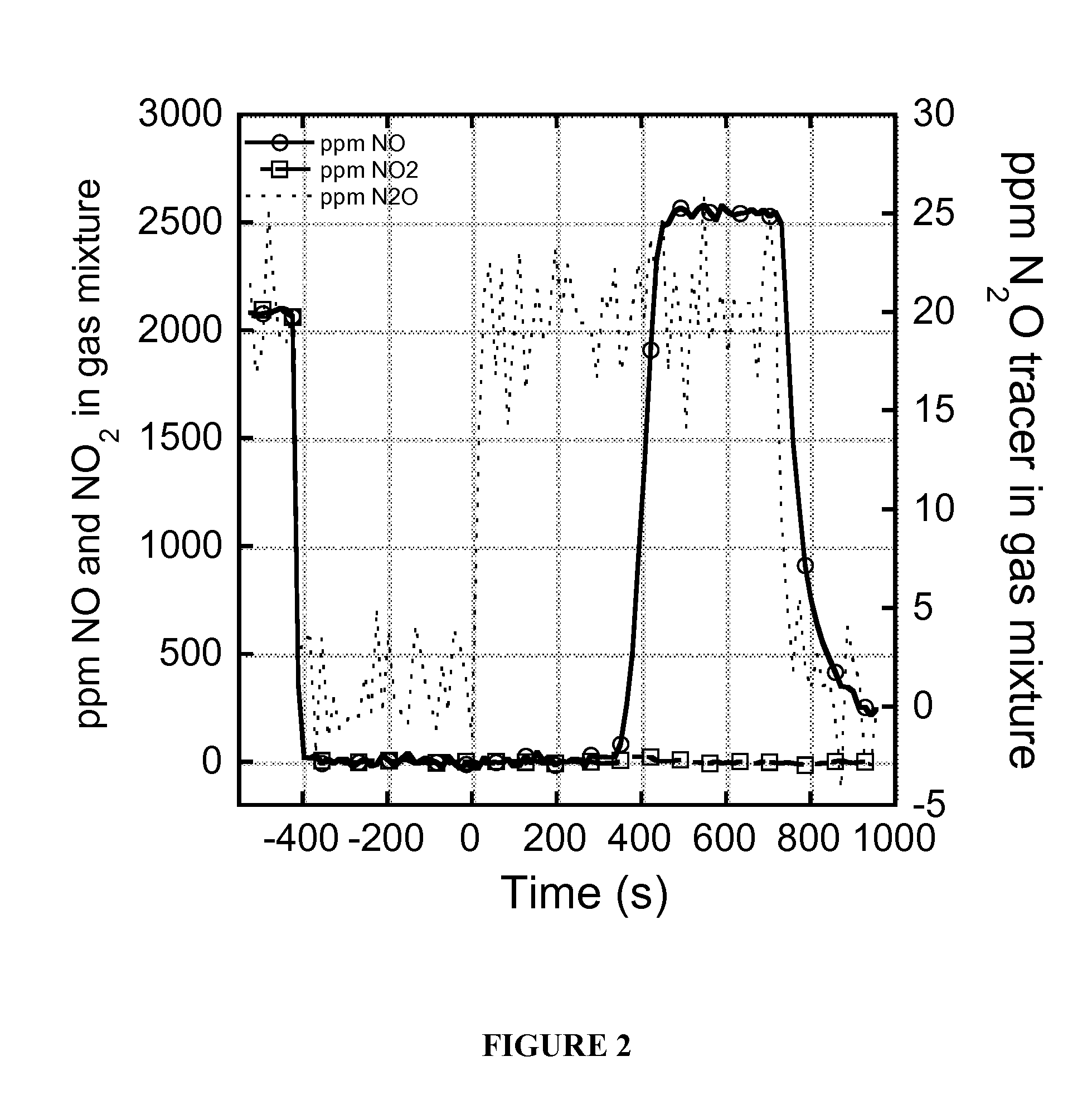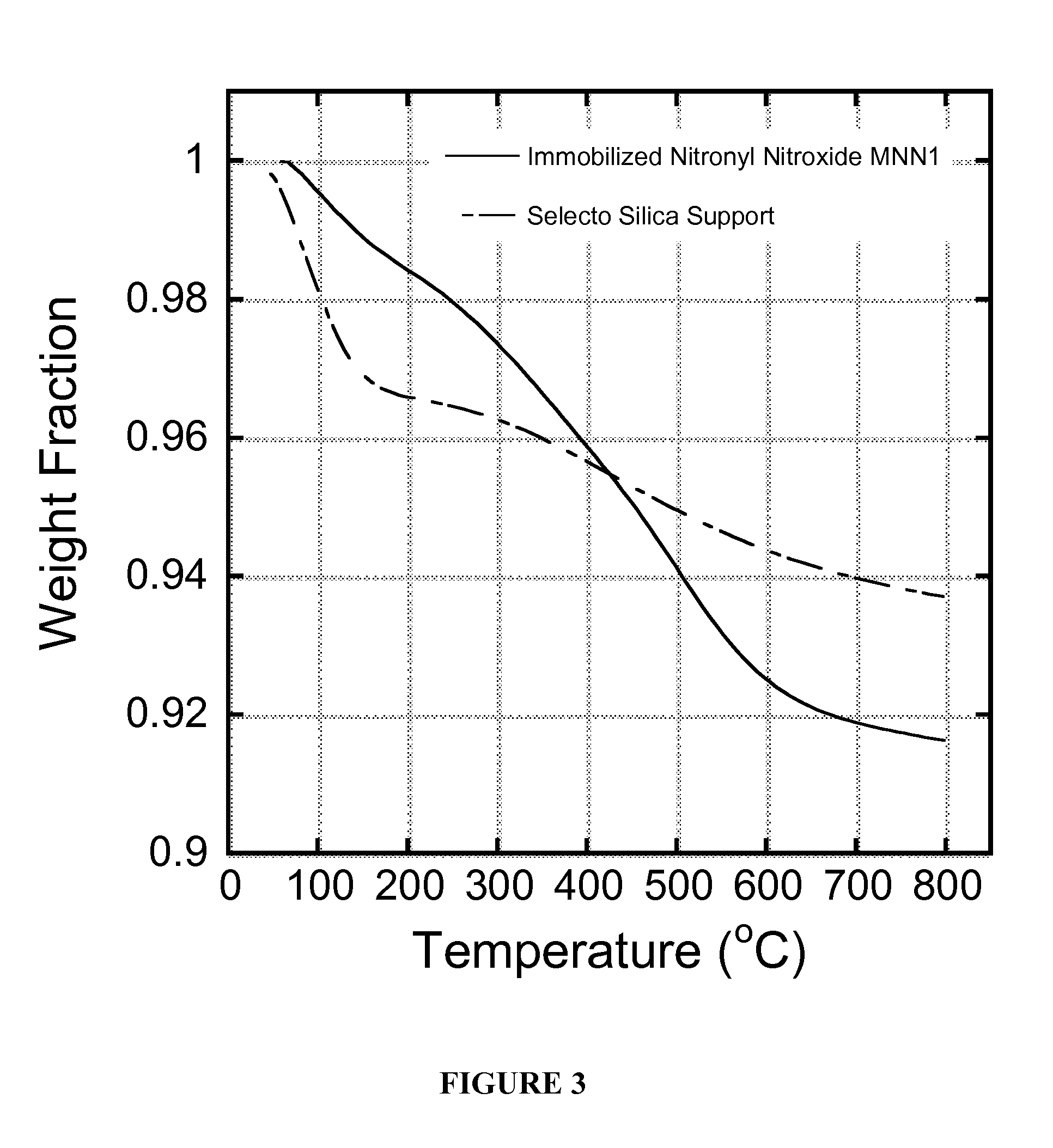BIFUNCTIONAL ACTIVE SITES FOR ADSORPTION OF NOx
a technology of bifunctional active sites and nox, which is applied in the direction of physical/chemical process catalysts, organic compound/hydride/coordination complex catalysts, separation processes, etc., to avoid the toxicological problems inherent in metals
- Summary
- Abstract
- Description
- Claims
- Application Information
AI Technical Summary
Benefits of technology
Problems solved by technology
Method used
Image
Examples
example 1
[0113]Reactions were performed under nitrogen atmosphere, and solvents were dried and distilled by standard methods. Deoxygenation of methanol was performed by bubbling dry argon through the solution for 15 min. Triethylamine was distilled over CaH2 and stored over molecular sieves. TEMPO-OH and 2-Nitropropane were purchased from commercial sources in analytical grade and were used as received. Compounds 2-5 were synthesized using established literature procedures.7,9,10 1H NMR spectra were recorded in CDCl3 on a Bruker AV-300 (300 MHz) instrument. The 1H NMR data are referenced to residual CHCl3 (7.25 ppm) in the solvent. Analytical thin-layer chromatography was performed on precoated silica gel plates (0.25 mm, 60F-254, Merck), and silica gel (Selecto 60) was used for column chromatography. FAB-MS spectra were recorded with using O-nitrophenyl octyl ether (NPOE) as matrix.
1.1 Synthesis of 2-(4′-Triethoxysilyloxyphen-1′-yl)-4,4,5,5-tetramethylimidazolidine-3-oxide-1-oxyl
6
[0114]
[011...
example 2
[0118]Synthesis of materials involves the covalent attachment of nitroxyl radicals and nitronyl nitroxides to the surface of silica. In the case of the nitronyl nitroxide, this type of covalent attachment to a material has not been demonstrated previously and relies on the unobvious assumption that the electronic conjugation of the nitronyl nitroxide site with silica, as well as its anchoring and through-space interactions with the silica surface, will still preserve its chemical connectivity, electronic characteristics, and, ultimately, its oxidation reactivity, particularly with NO. This is especially so in light of previous studies that have shown that the properties of nitronyl nitroxides, including rate constant for oxidation with NO, depend critically on the composition of the “R” group shown in Scheme 2.6
2.1 Preparation of Radical Covered Silica Gels
Path A Using Organosilyl Precursors
[0119]2.1 (a) Path A: Preparation of MTEMPO and MAK1
[0120]This path involves the direct hydr...
example 3
3.1 Preparation of Radical Covered Silica Gels
Path B Using Ethoxylated Silica
[0131]
PUM
| Property | Measurement | Unit |
|---|---|---|
| Adsorption entropy | aaaaa | aaaaa |
Abstract
Description
Claims
Application Information
 Login to View More
Login to View More - R&D
- Intellectual Property
- Life Sciences
- Materials
- Tech Scout
- Unparalleled Data Quality
- Higher Quality Content
- 60% Fewer Hallucinations
Browse by: Latest US Patents, China's latest patents, Technical Efficacy Thesaurus, Application Domain, Technology Topic, Popular Technical Reports.
© 2025 PatSnap. All rights reserved.Legal|Privacy policy|Modern Slavery Act Transparency Statement|Sitemap|About US| Contact US: help@patsnap.com



